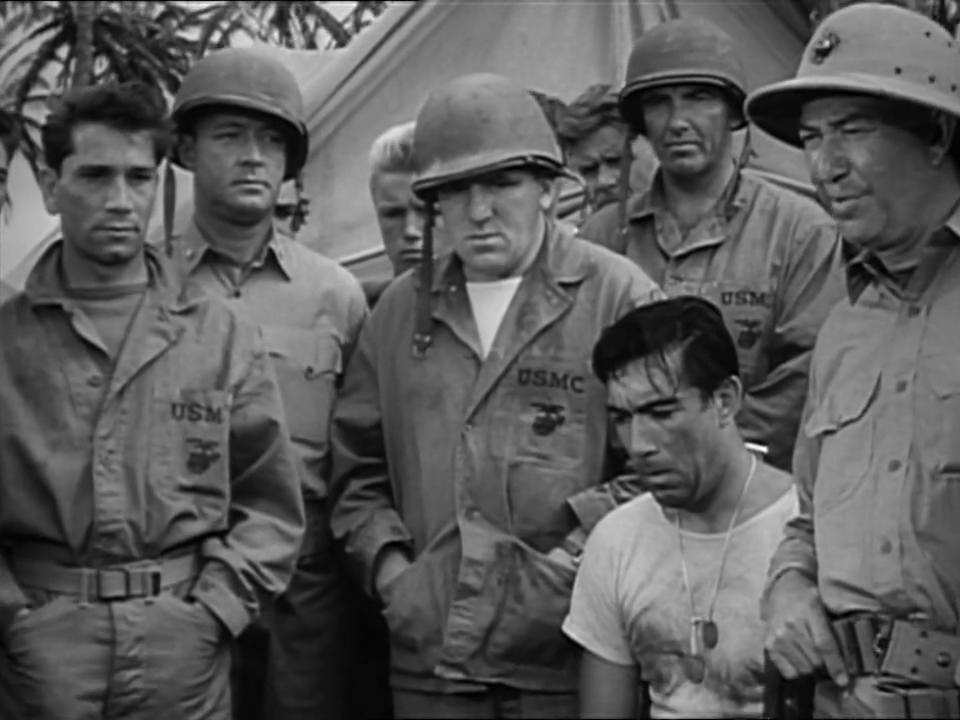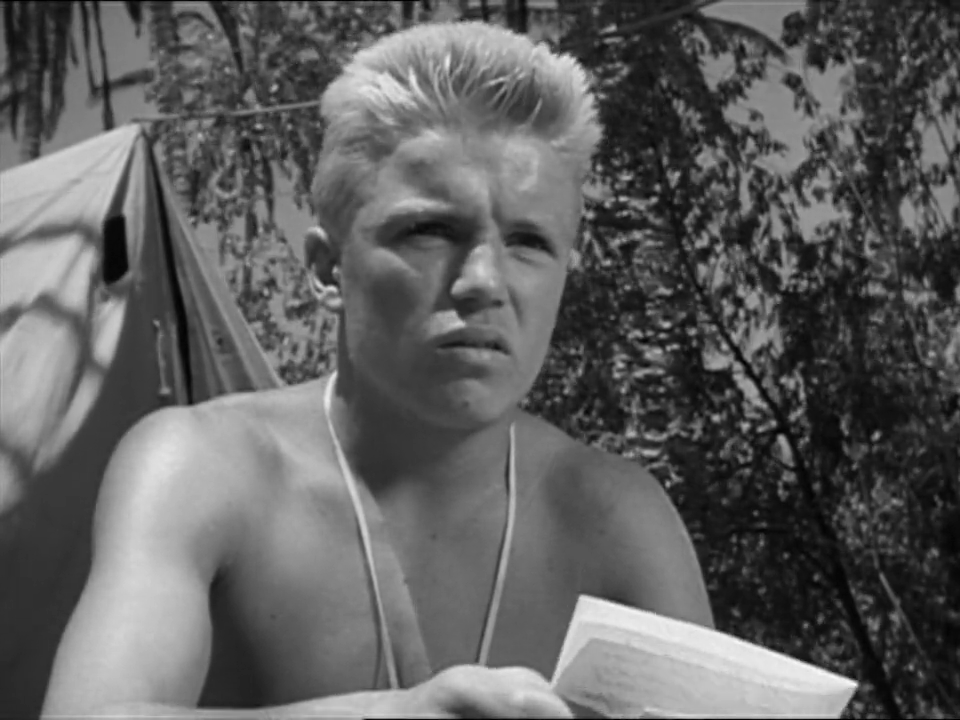Guadalcanal Diary (1943)
“One by one, they must be blasted from the earth that hides them.”
|
Synopsis: |
|
Genres, Themes, Actors, and Directors:
Review: Prominent in this sequence is Quinn, who — despite being just one among a handful of ensemble actors — stands out as notably dedicated and fearless, making comments like, “It isn’t so much dying; it’s having to sit here and take it!” Unfortunately Bendix and Stander’s “comedic relief” is quickly tiresome: … and it’s clear that super-young Jaeckel (in his debut role) doesn’t have a lick of acting experience behind him (though he sure is a cutie!): Overall, however, the film comes across as a reasonably effective, action-filled war flick showing the types of challenging scenarios our boys faced in the Pacific arena. Note: Be forewarned that Japanese soldiers are referred to in various derogatory terms of the time, and shown to be sneaky and relentless in their efforts. Notable Performances, Qualities, and Moments: Must See? Links: |








3 thoughts on “Guadalcanal Diary (1943)”
First viewing. A once-must, for its historical value and as a rather-effective addition to the WWII-film canon.
This is a film that I would like to see again at some point. Its elements blend well: acting, direction, photography, editing, even its use of narration (done particularly well – and I’m usually not fond of narration for this kind of film, or even most films for that matter).
Like ‘Wake Island’, it shows just how formidable a force the Japanese army actually was. The overall effect of the film is harrowing enough – yet, when it was shown on The Military Channel, Lt. Col. David Edson (grandson of Major General “Red Mike” Edson, who fought at Guadalcanal) remarked that even though some of the day to day life was shown, what we didn’t see was “the fatigue, the months of day to day stress, the inevitable disease…”.
A standout scene comes when Bendix delivers a very moving speech about what it means to be a regular-guy-in-war.
Apparently the USMC still makes Tregaskis’ book required reading for all officer candidates. This is the first time I’ve seen a WWII film that made me think I’d like to read the source material.
So glad to hear you’re having a rewarding experience (re)visiting these WWII-era flicks. I, too, am more impressed and engaged by them than I thought I would be; the heroism and tenacity on display is truly mind-boggling.
To me, the best of these films are worthy of study. They’re not enough in themselves (as most non-fiction films aren’t) but the ones that take the more-serious approach by seeming to be more objective are still helpful in getting a better overview of aspects of WWII.